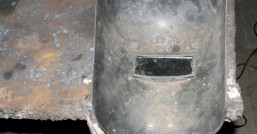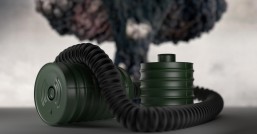In the intricate world of welding, where metal meets metal with the spark of creation, innovation constantly redefines the art and science of joining materials. Among the myriad of welding technologies, self-protective flux-cored wires (SPFCWs) stand out as a versatile and efficient solution, particularly in harsh and demanding environments. But what exactly do we mean by "self-protective" when it comes to these welding consumables, and what are their distinct application features? Let's delve into the fascinating realm of SPFCWs, exploring their English terminology and understanding their unique attributes.
What Are Self-Protective Flux-Cored Wires?

To begin, self-protective flux-cored wires are a type of welding wire that combines the efficiency of flux-cored arc welding (FCAW) with the convenience of not requiring an external shielding gas. Traditional flux-cored wires often rely on an inert or active shielding gas to protect the weld pool from contamination by atmospheric gases like oxygen, nitrogen, and hydrogen, which can lead to porosity, embrittlement, and other weld defects. However, SPFCWs incorporate a specially formulated flux within their hollow core, which, upon heating, reacts to produce its own shielding gas and slag. This internal shielding mechanism not only eliminates the need for external gas supply but also enhances the welding process by offering additional protective layers against contaminants.
Unique Application Features
Versatility Across Environments: SPFCWs shine in environments where external shielding gas supply is challenging or impractical, such as outdoor, windy, or confined spaces. Their self-sufficient shielding capability allows for continuous, high-quality welding operations even in adverse conditions, making them a go-to choice for a wide range of industries, including construction, shipbuilding, pipeline welding, and more.
Enhanced Weld Quality: The flux within SPFCWs not only generates shielding gas but also contributes to the welding process through various metallurgical reactions. It can neutralize impurities, stabilize arc performance, and promote better wettability of the molten metal, resulting in stronger, more ductile, and visually appealing welds. The slag formed acts as an additional barrier, further protecting the weld from atmospheric contamination and facilitating easier post-weld clean-up.
Operational Efficiency: By eliminating the need for external gas cylinders and related equipment, SPFCWs streamline the welding setup, reducing both equipment costs and logistical complexity. This simplicity translates into increased productivity, as welders can quickly move from one job site to another without the burden of transporting and managing shielding gas supplies.
Cost-Effectiveness: Over time, the elimination of external gas requirements can lead to significant cost savings. Moreover, SPFCWs are often designed to minimize spatter and reduce rework, further enhancing overall economy. For businesses operating on tight budgets or seeking to optimize their welding operations, SPFCWs offer a compelling return on investment.
Welding Speed and Deposition Efficiency: SPFCWs are renowned for their high deposition rates and welding speeds, making them ideal for large-scale, high-volume welding applications. The high efficiency of these wires allows for faster completion of welding tasks, thus reducing labor costs and project timelines.
Challenges and Considerations
Despite their numerous advantages, SPFCWs do come with specific challenges and considerations. The formulation of the flux needs to be precisely tailored to the welding material and application to ensure optimal performance. Additionally, welders must be trained to handle the unique characteristics of SPFCWs, such as their tendency to produce a more reactive and sometimes smokier arc compared to gas-shielded processes. Furthermore, careful selection of welding parameters, including current, voltage, and travel speed, is crucial to maximize the benefits of SPFCWs while minimizing potential drawbacks like porosity and undercut.
Conclusion
Self-protective flux-cored wires represent a significant leap forward in welding technology, offering unparalleled versatility, enhanced weld quality, operational efficiency, cost-effectiveness, and high deposition rates. Their ability to operate independently of external shielding gas makes them indispensable in a variety of industries and environments. While challenges do exist, particularly in terms of flux formulation and welding parameter optimization, the overall benefits of SPFCWs make them a highly attractive option for many welding applications. As technology continues to evolve, it is likely that self-protective flux-cored wires will play an increasingly pivotal role in shaping the future of welding, driving innovation and efficiency in the pursuit of perfect welds.








发表评论